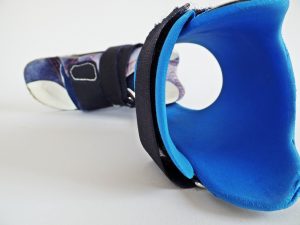Also Available in Video Format!
With off-the-shelf knee and lumbar orthotics (HCPCS Code OR03) included in Medicare’s Round 2021 of Competitive Bidding (and thus ability to supply such devices to beneficiaries living in competitive bid areas limited to bid-winners), non bid-winning DMEPOS providers have been scrambling to find new revenue streams for their business models.
Many such providers are looking to continue providing orthotics – such as prefabricated (HCPCS Code OR02) or custom fabricated (HCPCS Code OR01) braces.
Unfortunately, a misunderstanding that could jeopardize Medicare billing privileges seems to be spreading. It pertains to DMEPOS provider personnel/fitter requirements to enable billing for such prefabricated or custom fabricated orthotics; allow me an opportunity to clear the air.
While providing Medicare patients with off-the-shelf orthotics does not require the involvement of any specialized personnel, prefabricated and custom fabricated orthotics do. This is irrespective of which Accreditation Organization the provider selects for accreditation.
Medicare Part B enrolled DMEPOS providers are required to stay in compliance with both Medicare’s Supplier Standards and Quality Standards in order maintain billing privileges.
Quality Standards Appendix C applies to Custom Fabricated and Custom Fitted equipment, and specifically states, in pertinent part that “[i]ndividuals supplying the items identified in this appendix must have certification, and/or licensing, and specialized education, training and fitting experience.”
Accordingly, a DMEPOS provider who has not employed or is not contracted with such individual cannot compliantly bill the Medicare program for prefabricated or custom fabricated orthosis.
The specific type of required personnel depends on the state in which the patient resides. The minimum required personnel to fit a Medicare patient for such devices is a Certified Orthotic Fitter; however, some states mandate beyond that minimum requirement.
Certain states require a specific type of licensed professional – such as an Orthotist or Prosthetist – to supply such Custom Fabricated or Custom Fitted orthosis. For states without such heightened requirements, the DME provider will at a minimum need to contract with/employ a Certified Orthotic Fitter to conduct the fitting in order to compliantly bill Medicare for the supplied equipment.
There are two organizations that award the Certified Orthotic Fitter credential: (1) American Board for Certification in Orthotics, Prosthetics & Pedorthics (ABC); and (2) Board of Certification/Accreditation (BOC).
I recently had a chance to discuss the Certified Orthotic Fitter credentialing process with the Credentialing Director from BOC, Matthew Gruskin, MBA, BOCO, BOCPD, CDME; here’s what you need to know about the requirements:
For participation in the DMEPOS product category of Custom Fit Orthotics (OR02), employing or contracting with an individual with “specialized education, training and fitting experience”, such as a Certified Orthotic Fitter, can create opportunities for facilities to expand their services and provide clinical care to patients and their communities. The requirements to become a Certified Orthotic Fitter include successful completion of an entry-level education program and 1000 hours of clinical care experience with supervision. Once these prerequisites are meet, the candidate can apply and sit for the exam.
It is important to remember that employing personnel is only part of being compliant with Appendix C. A clear understanding of documentation requirements is paramount to ensuring compliance when adding any DMPEOS product category. In Appendix C, there are three areas of focus in addition to the personnel requirements:
- Intake and assessments,
- Patient and caregiver training
- Instructions and follow up
Understanding additional requirements in each of these categories will lead to successful compliance.
In sum:
- Providers cannot ‘escape’ the impacts of competitive bidding merely by providing prefabricated or custom fabricated orthosis in the same manner they provided off-the-shelf equipment.
- Rather, at a minimum the provider needs to be affiliated with a Certified Orthotic Fitter who will physically fit the beneficiary for the equipment.
- In certain instances, depending on the state the beneficiary resides in and whether the equipment is prefabricated or custom fabricated, the fitter may need to be a licensed Orthotist or Prosthetist.
- Appropriate personnel is only the first part of being complaint with Appendix C of the Quality Standards.

 By:
By: